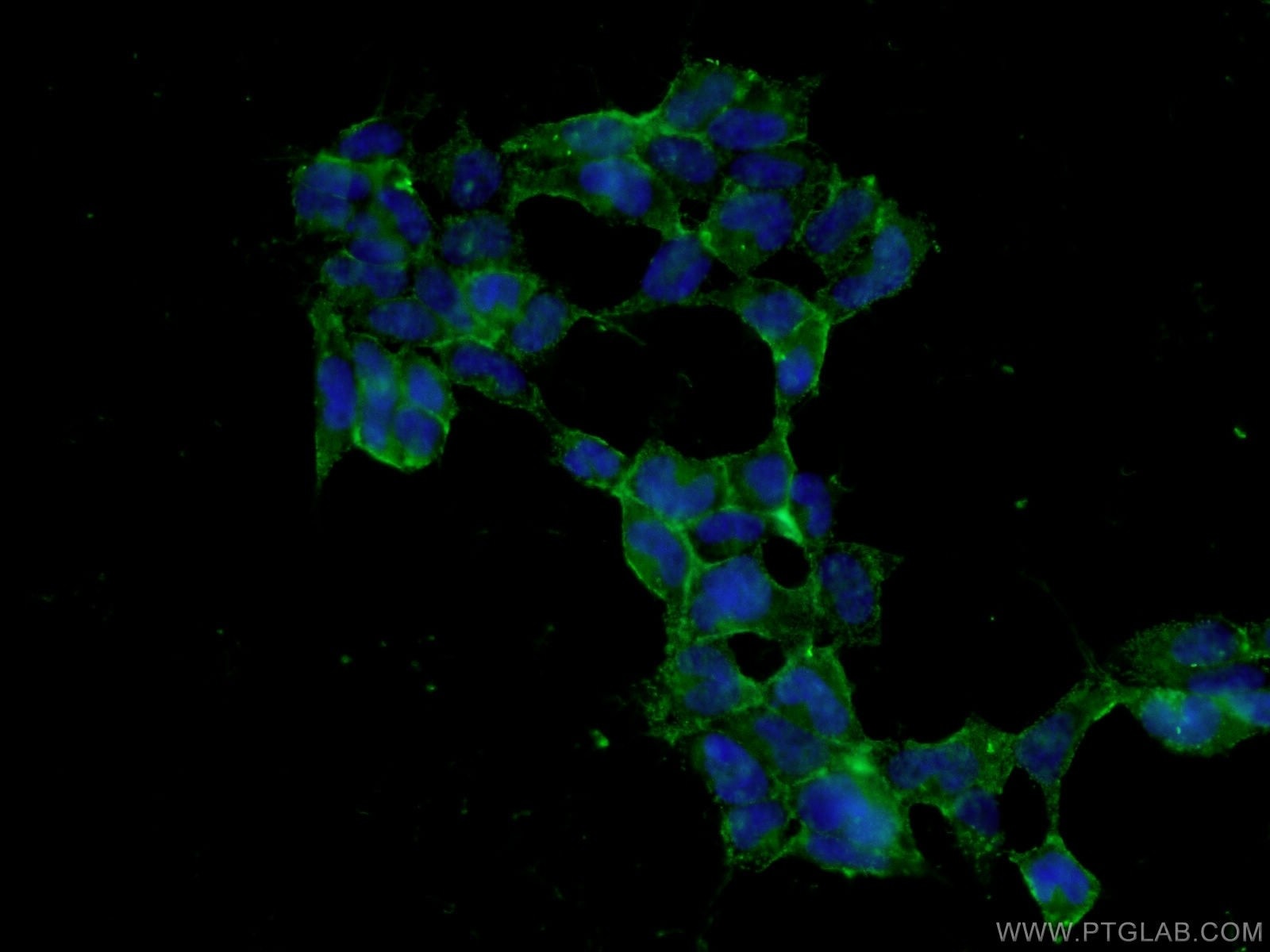HEK 293 cells Polyklonaler Antikörper
HEK 293 cells Polyklonal Antikörper für IF,ELISA
Wirt / Isotyp
Kaninchen / IgG
Getestete Reaktivität
human
Anwendung
WB, IF,ELISA
Konjugation
Unkonjugiert
Kat-Nr. : 27347-1-AP
Synonyme
Galerie der Validierungsdaten
Geprüfte Anwendungen
| Erfolgreiche Detektion in IF | HEK-293-Zellen |
Empfohlene Verdünnung
| Anwendung | Verdünnung |
|---|---|
| Immunfluoreszenz (IF) | IF : 1:500-1:2000 |
| It is recommended that this reagent should be titrated in each testing system to obtain optimal results. | |
| Sample-dependent, check data in validation data gallery | |
Veröffentlichte Anwendungen
| WB | See 1 publications below |
Produktinformation
27347-1-AP bindet in WB, IF,ELISA HEK 293 cells und zeigt Reaktivität mit human
| Getestete Reaktivität | human |
| In Publikationen genannte Reaktivität | human |
| Wirt / Isotyp | Kaninchen / IgG |
| Klonalität | Polyklonal |
| Typ | Antikörper |
| Immunogen | Zelllysat |
| Vollständiger Name | HEK 293 cells |
| Gene symbol | |
| Gene ID (NCBI) | |
| Konjugation | Unkonjugiert |
| Form | Liquid |
| Reinigungsmethode | Protein-A-Reinigung |
| Lagerungspuffer | PBS mit 0.02% Natriumazid und 50% Glycerin pH 7.3. |
| Lagerungsbedingungen | Bei -20°C lagern. Nach dem Versand ein Jahr lang stabil Aliquotieren ist bei -20oC Lagerung nicht notwendig. 20ul Größen enthalten 0,1% BSA. |
Hintergrundinformationen
Human Embryonic Kidney 293 cells, also often referred to as HEK 293, 293 cells, or less precisely as HEK cells are a specific cell line originally derived from human embryonic kidney cells grown in tissue culture. HEK 293 cells were generated in early 70s by transformation of cultures of normal human embryonic kidney cells with sheared adenovirus 5 DNA in Alex Van der Eb's laboratory in Leiden, Holland. This antibody is designed to detect the protein of the HEK293 cells.
Protokolle
| Produktspezifische Protokolle | |
|---|---|
| IF protocol for HEK 293 cells antibody 27347-1-AP | Protokoll herunterladen |
| Standard-Protokolle | |
|---|---|
| Klicken Sie hier, um unsere Standardprotokolle anzuzeigen |
Publikationen
| Species | Application | Title |
|---|---|---|
Int J Biol Macromol Western blotting analysis of proteins separated by agarose native gel electrophoresis. |


